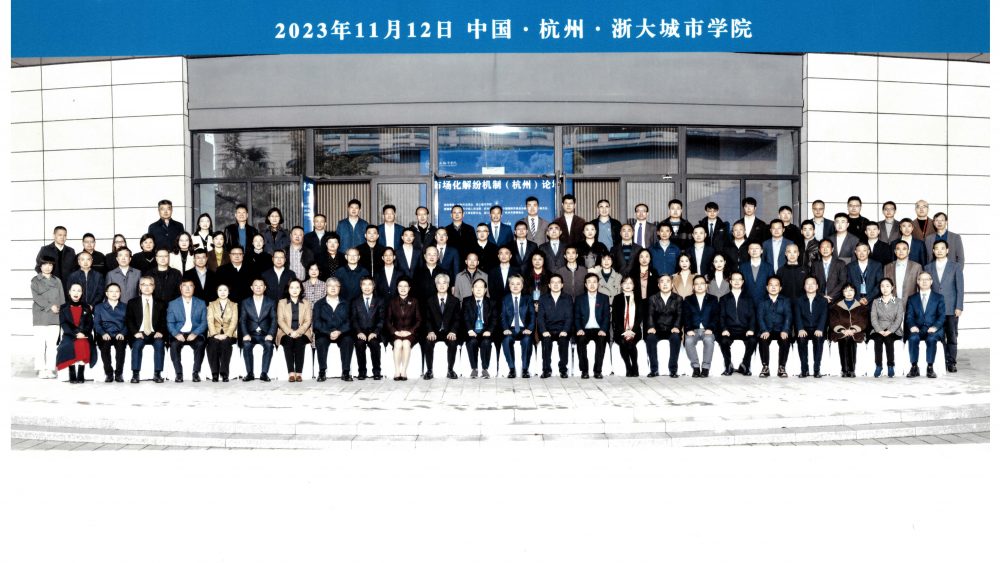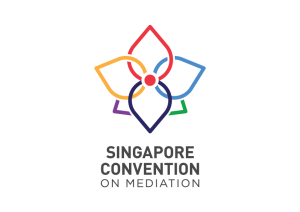Sage Mediation was invited to present at the Conference on Developing of Market Driven Mediation Systems hosted by the Zhejiang City University. Sage CEO Aloysius Goh, shared about Singapore’s efforts to be a commercial mediation hub.
Read his full speech here:
Good afternoon, distinguished speakers, esteemed guests,
My deepest thanks to the conference organisers for inviting me to share some of my perspectives on the role of private international mediation centres in the development of a healthy mediation eco-system.
I have been mediating for nearly 20 years. 15 of these were with state-owned organisations. The past 5 years, I have been running a mediation centre I had founded. Mediation has given me rich insights into human nature, conflict, and relationships.
Flexible Mediation Process Design and Agile Problem-solving
Recently, I conducted a USD100million case between companies from Europe and Asia. One company was represented by its young CEO who was actively making offers. The other company was represented by 6 elderly management leaders. They took a long time to make offers. Even to decide who to convey the offer to me took time. Which company can be said to have come ready for the mediation?
There are differences in how Europeans, Americans, Indians, Australians, Chinese, and Singaporeans look upon conflict. But, more than geography, I have observed that some of the biggest differences today are created by age, digital technology competence, and wealth levels. These differences exist within all societies today. They challenge mediators to be creative in our process and agile in our problem-solving technique.
Strategic Infrastructure Planning to Maximise Resource Returns
In helping governments plan and design effective mediation infrastructure. I have found that a key indicator of whether a mediation eco-system is healthy is whether its mediators and mediation institutions are evolving quickly enough to meet the needs of the community.
For a city that prides itself on innovation like Hangzhou, you understand this need for continual learning and change. You also know that improvement comes through the courage to experiment, the openness to criticism, and the difficult work of picking ourselves up from failure. This innovators’ spirit coupled with professionalism, discipline, and a commitment to excellence, ensures that pilot projects become sustained success stories.
When the eco-system is still young, there needs to be strategic investment in the appropriate infrastructure in order for good mediators to develop. When there is limited resource, funding smart is critical.
One of the most important mediation institutions that the Singapore government helped set up is the Singapore International Mediation Institute. Established as a non-profit organisation, SIMI focuses on studying the best practices of mediation around the world and organising them into a coherent professional conduct code for mediation professionals in Singapore. Most mediators in Singapore are accredited with SIMI. They have used the SIMI standards to guide their skills development. Mediation users are able to refer to the SIMI standards to ensure that their mediators behaved ethically and professionally. SIMI standards have become a way for Singapore to communicate to the world about what we believe is effective mediation.
It was not easy to define the standards. And, there remains continual debate about the accuracy of the standards. This debate is healthy and necessary to enable improvement.
Global Exchange to Broaden Best Practices for Cross-border Mediation
The other factor that builds good practices in international mediation is global exposure. Mediators in China should be encouraged to share their expertise internationally. In Singapore, there is significant demand for talented Chinese mediators. I don’t just mean those who speak the language. Many clients, Chinese and non-Chinese, seek mediators who appreciate how businesses in China operate, and who understand how Chinese businessmen make decisions.
Global exposure has been humbling for a mediator like me who comes from a small nation. So many techniques that I had thought were good were shown to be ineffective when applied in a different context. And, so many methods that I was told would lead to bad results have turned out to be false fears. Working with different mediators has made me a better mediator. Indeed, one of my hopes on this trip is to learn from mediators in Hangzhou much more about what enables good mediated outcomes in Hangzhou.
Professional Fees for Good Mediation Service
The last thing I believe will help mediation practice grow in quality is the sensitive issue of mediator fees. Charging a fair rate gives mediators’ dignity and ensures users respect the process. The fees provide a resource for mediators to invest in personal upskilling.
Singapore’s market for private mediation grew rapidly in the past years. In a recent survey of international corporate counsel by the Singapore Management University, it surfaced that the overwhelming majority felt that mediators should be paid on a similar pay scale as arbitrators. This comes to around RMB50,000 per day. It seems high, but, because mediation is typically lasting a day or two, it is still a fraction of litigation and arbitration costs.
The survey showed that clients were prepared to pay even if there was no settlement. Settlement is not the only indicator of competence. Clients are sufficiently sophisticated to respect good mediation practice. They appreciate that there are other more important measures such as the mediator’s ability to broker constructive conversations and develop creative solutions.
My clients appreciate that I make time to read their documents, understand the parties’ background, design the mediation process, and outline to them my mediation strategy. Private mediators do a lot of preparatory and follow up work after a mediation. Clients understand this and are prepared to pay for this. And, the ability to charge them a fair rate in turn motivates me to be efficient and add value.
A Healthy Eco-system is a Shared Responsibility
There are many other different factors required to make a healthy mediation eco-sytem: A strong legal framework encouraging early stage mediation and enforcing mediated outcomes. Careful promotion in strategic sectors such as family disputes, medical conflict, and workplace disputes. Close collaboration with lawyers’ associations.
These are all equally important. Suffice to say that I firmly believe that keeping the mediation eco-system healthy is the shared responsibility of mediators, judges, lawyers, policymakers, scholars, and business and community leaders.
I am confident that Hangzhou will be a light for mediation development, not just for China but for the world. You will make astounding advances in the use of technology for mediation. You will show how society can benefit rapidly when its members are always willing to work together to find practical, efficient, and amicable solutions to disputes.
I wish everyone good health and success in your peacemaking work.
Thank you!




